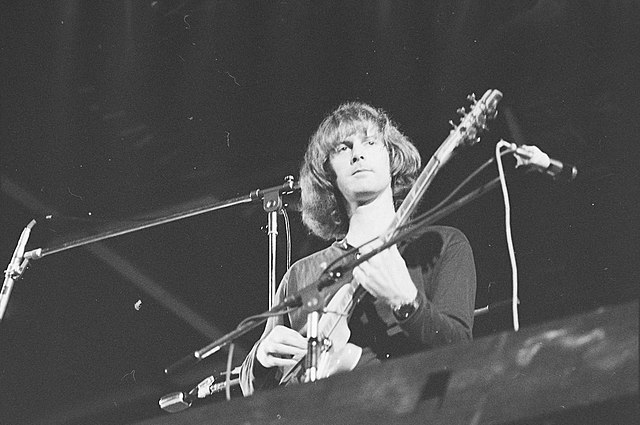Sweetheart of the Rodeo is the sixth album by American rock band the Byrds and was released in August 1968 on Columbia Records. Recorded with the addition of country rock pioneer Gram Parsons, it became the first album widely recognized as country rock as well as a seminal progressive country album, and represented a stylistic move away from the psychedelic rock of the band's previous LP, The Notorious Byrd Brothers. The Byrds had occasionally experimented with country music on their four previous albums, but Sweetheart of the Rodeo represented their fullest immersion into the genre up to that point in time. The album was responsible for bringing Parsons, who had joined the Byrds in February 1968 prior to the start of recording, to the attention of a mainstream rock audience for the first time. Thus, the album is an important chapter in Parsons' crusade to make country music fashionable for a young audience.
Sweetheart of the Rodeo
Roger McGuinn originally intended the album to be an overview of 20th-century American popular music.
Ryman Auditorium, where the Byrds made their appearance at the Grand Ole Opry on March 15, 1968.
The Byrds were an American rock band formed in Los Angeles, California, in 1964. The band underwent multiple lineup changes throughout its existence, with frontman Roger McGuinn remaining the sole consistent member. Although their time as one of the most popular groups in the world only lasted for a short period in the mid-1960s, the Byrds are considered by critics to be among the most influential rock acts of their era. Their signature blend of clear harmony singing and McGuinn's jangly 12-string Rickenbacker guitar was "absorbed into the vocabulary of rock" and has continued to be influential.
The Byrds in 1965 From left to right: David Crosby, Gene Clark, Michael Clarke, Chris Hillman, and Jim McGuinn
A Rickenbacker 360 12-string guitar similar to the one used by Jim McGuinn in 1964 and 1965. By 1966, McGuinn had transitioned to playing the three pickup 370/12 model.
Producer Terry Melcher (left) in the recording studio with Gene Clark (center) and David Crosby (right). Melcher brought in session musicians to play on the "Mr. Tambourine Man" single because he felt that the Byrds hadn't yet gelled musically.
The Byrds' psychedelic mosaic logo







